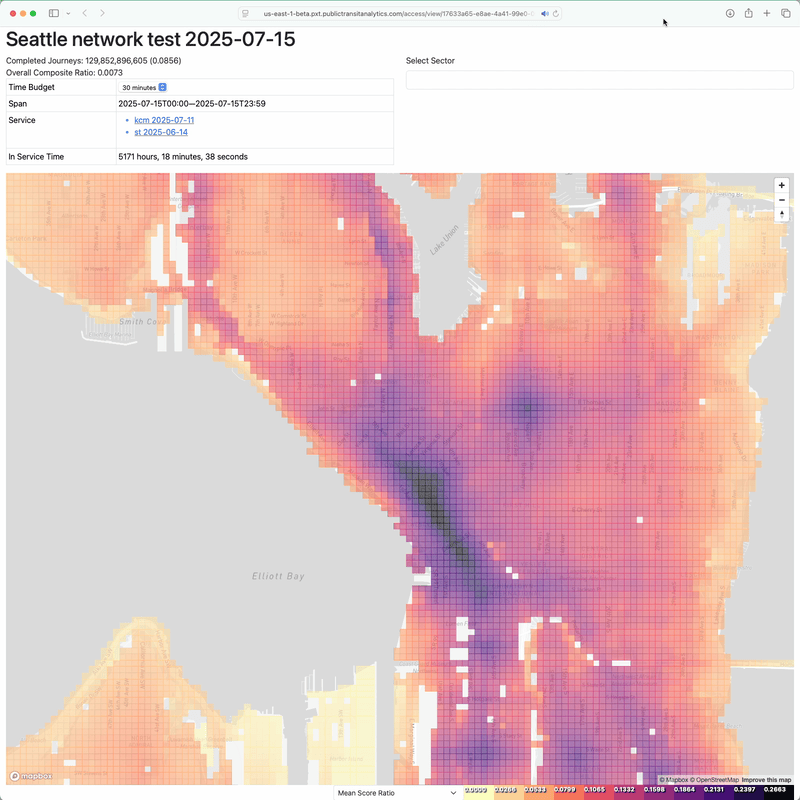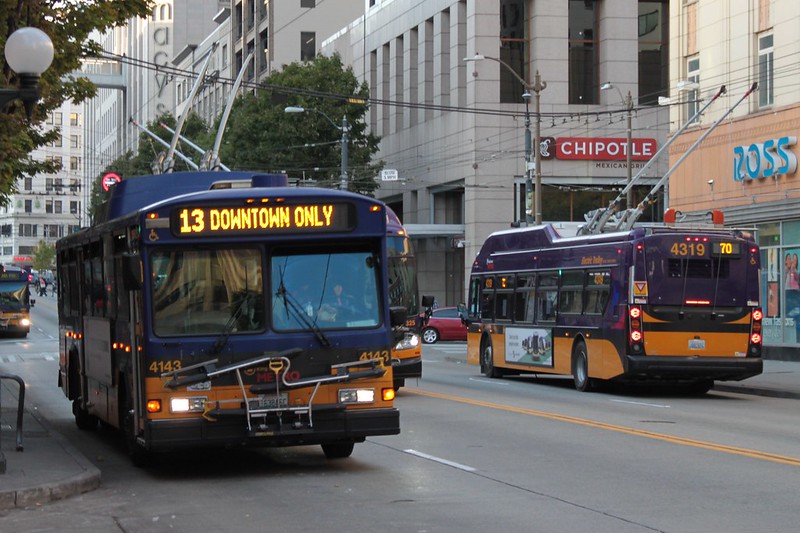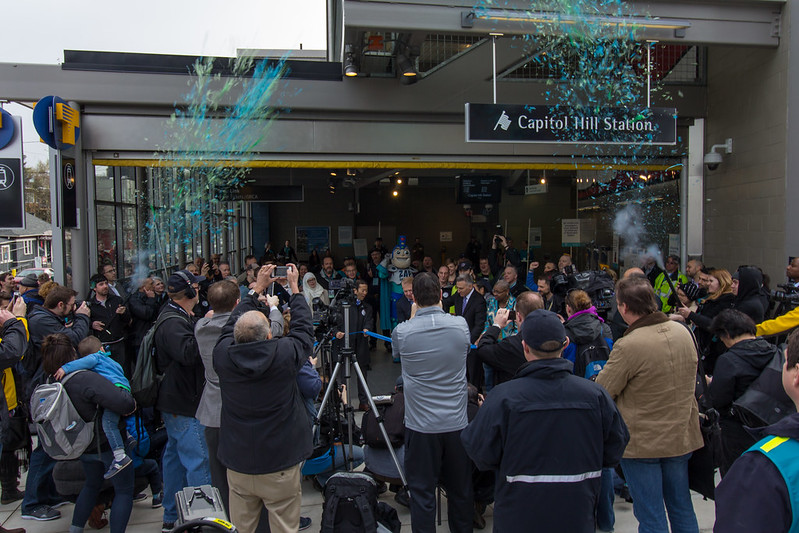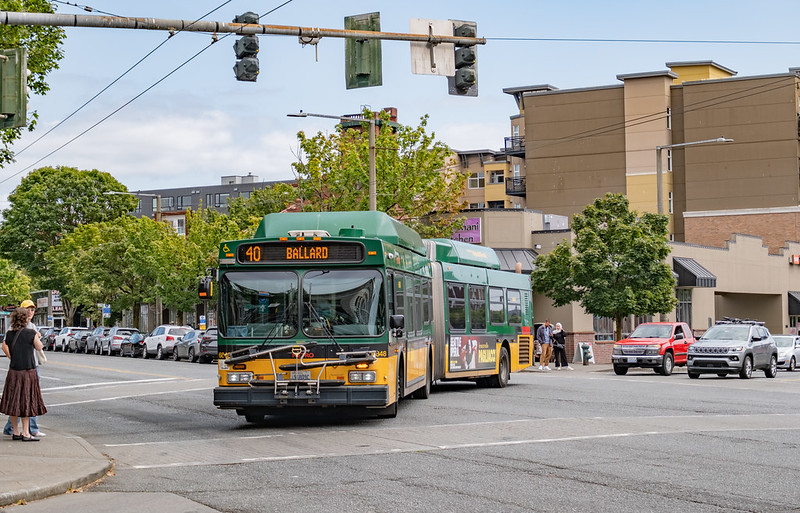This is a proposal to use Interstate 5 between Northeast Northgate Way and the Spokane Street Viaduct as the “second downtown tunnel” planned for Seattle in the Sound Transit 3 project (ST3). Between these two points, the entire highway would be converted into a transit corridor. This would require a feat of political courage and interagency cooperation, but would provide the exceptional public transit network that ST3 promised, while eliminating costly and disruptive portions of the project.
[Read More]Insurgent Transit
In Human Transit, Jarrett Walker describes his consulting work as being a domain expert who asks communities questions about the transit networks that they want to build. The questions present two endpoints to a spectrum. Each end has advantages and disadvantages. The position a transit agency takes depends on what the community that it serves values; there are no wrong answers. Walker then can help design a transit network conforming to these positions. There are four overarching questions.
- Ridership or coverage?
- Connections or direct service?
- Peak-first or base-first?
- Exclusive or compromised right of way?
I propose a fifth question: cooperation or insurgence?
[Read More]Frequency is Freedom. What is Span?
I’ve been revisiting Jarrett Walker’s book Human Transit1. Reading it crystalized the disjointed thoughts that I had as a transit rider into opinions on how public transit networks should operate. It is one of the most important books I have read, and I suspect that is true for many people with a stake in public transit.
I’m revisiting it by way of processing the response to my cost-neutral redesign of King County Metro’s network, which overlaid Seattle with 24/7 frequent service . It appeared in Seattle Transit Blog, where comments on it were more uniformly negative than I anticipated. These commenters are not fools. They recognized that widespread frequent overnight service would involve tradeoffs, like more crowding at rush hours, and fewer one-seat rides to population and activity centers like downtown and the University District. They insisted that riders would not favor this exchange.
[Read More]An Access Map Prototype
A network-wide access map colors sectors, uniform areas of a region, according to an access score. For an unweighted access measurement, the score corresponds to how often a rider originating in that sector can reach others throughout the region. But it doesn’t allow a transit rider with an interest in a specific sector to see exactly which destinations are within reach. The same data can generate a sector-centered access map that reveals this, so my maps allow transitioning between the network-wide and sector-centered modes. Unfortunately, it’s slow to the point of being unusable.

The Making of a Restructure: The End Result
This year, my proposed, in-service time neutral restructure of transit in Seattle is appearing in Seattle Transit Blog. Check it out there!
The Making of a Restructure: Downtown Seattle

“Trolleybuses on 3rd Avenue” by SounderBruce is licensed under CC BY-SA 2.0.
Even if all King County Metro’s “commuter” bus routes were shunted to Link Stations, downtown Seattle would still teem with buses. Many of the transit routes that run entirely within Seattle serve downtown, converging on Third Avenue to create a transit mall. In this proposal, as with past ones, this stretch of road would go from having the greatest amount of bus traffic in the city to being nearly devoid of it. But why mess with this longstanding feature of Seattle’s transit network?
[Read More]The Making of a Restructure: The "Commuter" Routes

“KCM 6895 in Downtown Seattle” by SounderBruce is licensed under CC BY-SA 2.0.
For the third year, I’m proposing a full network, in-service time neutral restructure of Sound Transit and King County Metro’s public transit service in Seattle. This year, I’m adjusting my approach slightly. Previously, after I established a budget of service hours available, I would test large, wide-ranging batches of changes against it, repeating this until I was close to the line without going over. This time, I’m parceling changes by theme, in hopes of better appreciating the savings and costs of different types of changes.
Also new this year is that I am balancing the service time budget not in terms of expenditure within Seattle, but throughout King County1. The impetus for this is a change in how I’m computing access2, but it’s fundamentally a more accurate assessment of expenditure regardless. The in-service time from segments of transit trips that crossed the Seattle border were unaccounted for in previous attempts. By expanding service-time measurement to the county level, this is only a concern for portions of service that leave the county, of which there are far fewer. This change is particularly germane to the routes featured in this post.
[Read More]A Love Letter to the Link

“U-Link Grand Opening” by Atomic Taco is licensed under CC BY-SA 2.0.
Want a one-sentence summary of every post in this blog? “Here is some data that argues for a radical change in the policies of public transit agencies.” This theme belies my overall satisfaction with the public transit in my life. Yes, I’d like to get places faster and wait less, especially at night and on weekends. But I don’t feel isolated from the city’s opportunities without a car, and it’s a critical component of how I control my cost of living. My life would be worse without it. I can demand improved transit, while still recognizing the great merit of what exists today.
In that spirit, access measurement can be used to celebrate something good, rather than to denounce detrimental policies. And in Seattle, Sound Transit’s Link 1 Line is good.
[Read More]What's Wrong with Seattle's Streetcars?

“First Hill Streetcar on Display” by Atomic Taco is licensed under CC BY-SA 2.0.
Ever since I read this Seattle Times article on the South Lake Union Streetcar, I haven’t been able to get the phrase “streetcar opponent Eugene Wasserman” out of my mind. Homer’s works use epithets (in the term’s original sense) to describe an existential characteristic of an entity. I’m sure this Eugene Wasserman is a multifaceted human being, but in this article’s story, he is a character in the same manner as “swift-footed Achilles.” So it’s not intended as a personal attack when I say that I find the idea of a “streetcar opponent” to be absurd, and emblematic of how stupid discourse around streetcars tends to be. When thinking about what differentiates the value of a transit route, the type of vehicle operating it doesn’t matter that much, compared to the route’s measurable properties. Inhabiting the role of “streetcar opponent” just doesn’t make sense.
That being said, as I’ve developed some access-based measurements of public transit routes, Seattle’s streetcar routes have stood apart. They are comfortably worse than all King County Metro bus routes that primarily serve Seattle, when considering two such measurements, the percent replaceable and journeys per in-service second. Given that, is being a “streetcar opponent” actually a sensible position?
[Read More]The Routeshed

“King County Metro Route 40 | NFI D40LF | Ballard (Leary Ave NW @ NW Market St)” by Han Zheng is licensed under CC BY-SA 2.0.
After working in tech, where force-feeding disruptive changes to users is commonplace, the world of public transit planning feels like a group of indecisive friends struggling to decide on a place to eat. Modifications to bus routes involve consulting a litany of stakeholders. Those aren’t just riders, but businesses and residents along the route, as well as groups representing other road users. For the RapidRide J Project, a joint effort of King County Metro and the Seattle Department of Transportation (SDOT) that is converting the former’s route 70 to a Bus Rapid Transit line, outreach started in 2015. Unfurling the Outreach Conducted to Date section on its project page reveals almost 100 sessions. The commonality among all of them is that they involve parties who are geographically close to the course of the modified route.
[Read More]